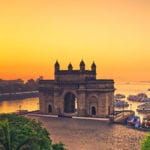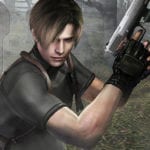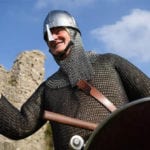 Technology
Technology  Technology
Technology  Our World
Our World 10 Ways Icelandic Culture Makes Other Countries Look Boring
 Misconceptions
Misconceptions 10 Common Misconceptions About the Victorian Era
 Mysteries
Mysteries 10 Strange Unexplained Mysteries of 2025
 Miscellaneous
Miscellaneous 10 of History’s Most Bell-Ringing Finishing Moves
 History
History 10 Great Escapes That Ended Right Back in Captivity
 Weird Stuff
Weird Stuff 10 Fascinating Things You Might Not Know About Spiders
 Food
Food 10 Everyday Foods You Didn’t Know Were Invented by the U.S. Military
 History
History 10 Odd Things Colonial Americans Kept at Home
 Weird Stuff
Weird Stuff 10 Superstitious Beliefs That Once Consumed Entire Cultures
 Technology
Technology 10 Scientific Breakthroughs of 2025 That’ll Change Everything
 Our World
Our World 10 Ways Icelandic Culture Makes Other Countries Look Boring
 Misconceptions
Misconceptions 10 Common Misconceptions About the Victorian Era
Who's Behind Listverse?

Jamie Frater
Head Editor
Jamie founded Listverse due to an insatiable desire to share fascinating, obscure, and bizarre facts. He has been a guest speaker on numerous national radio and television stations and is a five time published author.
More About Us Mysteries
Mysteries 10 Strange Unexplained Mysteries of 2025
 Miscellaneous
Miscellaneous 10 of History’s Most Bell-Ringing Finishing Moves
 History
History 10 Great Escapes That Ended Right Back in Captivity
 Weird Stuff
Weird Stuff 10 Fascinating Things You Might Not Know About Spiders
 Food
Food 10 Everyday Foods You Didn’t Know Were Invented by the U.S. Military
 History
History 10 Odd Things Colonial Americans Kept at Home
 Weird Stuff
Weird Stuff 10 Superstitious Beliefs That Once Consumed Entire Cultures
Top 10 Captivating Stories From World’s Fairs
The world’s fair is an international exhibition meant to allow nations to showcase their achievements to a massive audience. All world expositions are built around a theme which can be general (industry, aviation) or more specialized like the inauguration of the Panama Canal at the 1915 San Francisco Expo.
These fairs are also known for building landmarks which became iconic symbols of their host cities. Most famous, of course, is the Eiffel Tower, but other examples include the Seattle Space Needle, the first Ferris wheel, and the Atomium in Brussels.
The first world’s fair took place over 150 years ago in London. The next one will happen in 2020 in Dubai. Between those two, the world’s fair has amassed a wealth of experiences, both good and bad. These are some of the most notable and bizarre.
10 How Pabst Got Its Ribbon

For over a century, the Pabst Brewery has touted its product as America’s Best Beer after being awarded its iconic blue ribbon at the 1893 World’s Columbian Exposition (aka the Chicago World’s Fair). A few years later, the beer changed its name from Pabst Select to Pabst Blue Ribbon to make the transformation complete.
As the decades went by, the origins of the ribbon got increasingly murky. It was said that the ribbon itself first appeared on the beer after the world’s fair, although this is debunked by Pabst’s own website.
They claim that they started tying silk blue ribbons around each bottle of beer (then known as Best Select) around 1882 to signify the many awards it won. However, other accounts of the Columbian Expo go even further and claim that Pabst never received the blue ribbon at the fair.
Beer historian Maureen Ogle asserts that the entrants were not judged against each other but against an industry standard based on several characteristics such as purity, color, and flavor. Each beer received a score between 0 and 100.
Pabst did achieve the highest score (barely beating out Anheuser-Busch), but they received the same honor as everyone else with a score over 80. Crucially, there were no blue ribbons to give out. Rather, everyone with a winning score was awarded the same commemorative bronze medal and certificate.[1]
9 The Wild West Show Next To The Fair

The aforementioned Columbian Expo had its fair share of unusual problems, chief among them that notorious serial killer H.H. Holmes was using the event to find unsuspecting, out-of-town victims for his Murder Castle. The whole thing almost became a financial disaster. It was saved only by its main attraction, the eponymous Ferris wheel, created by George Washington Gale Ferris Jr.
As an added headache, the World’s Fair faced some stiff competition from Buffalo Bill’s Wild West Show. Not one to miss a good opportunity, Bill Cody realized the magnitude of the fair and tried to be part of it. However, he backed out once he found out that the exposition’s committee wanted half of his gross proceeds. A shrewd businessman, Cody leased 15 acres of land next to the World’s Fair and set up his own attraction.
Buffalo Bill’s Wild West Show was comprised of approximately 300 people and several herds of animals. They showcased popular features such as Annie Oakley’s feats of marksmanship, a reenactment of Custer’s land stand, and a choreographed stagecoach attack by Native Americans complete with cavalry rescue.[2]
Cody’s show began four weeks before the start of the expo and ran until a day after the world’s fair closed down. The more than 310 performances averaged 16,000 spectators and made $1 million in profit. Bill used his share to found the city of Cody, Wyoming.
8 The Diplomatic Incident Caused By A President
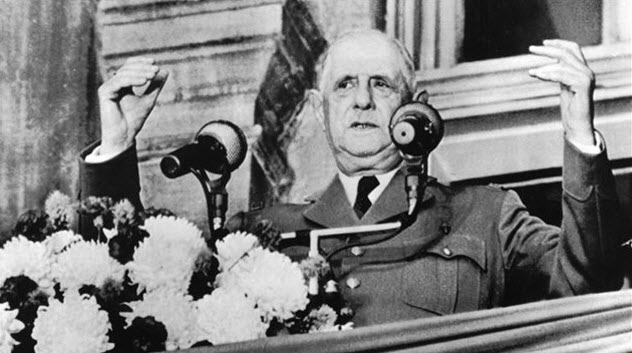
With many world’s fairs serving as stages for countries to display their best and brightest, political tensions can sometimes run high. This was especially true for the 1967 Montreal Exposition which sparked a diplomatic incident between Canada and France.
During the late 1960s, the Canadian province of Quebec was experiencing a political movement advocating for sovereignty. One of the many prominent political figures to make an appearance at Expo 67 was French President Charles de Gaulle. During his speech in front of thousands at Montreal City Hall, de Gaulle uttered four words which caused a scandal: Vive le Quebec libre (“Long live free Quebec”).[3]
The phrase was a slogan used by Quebecers promoting independence and was seen as an unequivocal endorsement of the sovereignty movement. The French president’s speech sparked a furor and prompted Canadian Prime Minister Lester B. Pearson to rebuke de Gaulle with an official statement.
He said that the people of Canada are free and don’t need to be liberated, also mentioning the thousands of Canadians who died to liberate Europe during the world wars. Minister of Justice Pierre Trudeau questioned what would have happened if the Canadian prime minister had gone to France and shouted “Brittany to the Bretons.”
De Gaulle took offense to these remarks and cut his trip short. Back home, he received some criticism for breaking protocol, and the relationship between the two countries remained frosty for the final years of de Gaulle’s presidency.
7 Feeding Time At The Fair
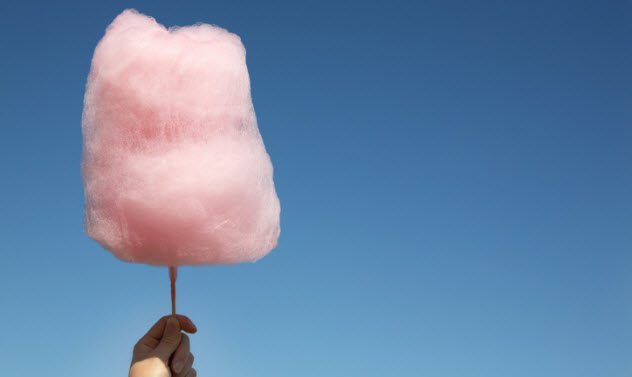
With millions of visitors, food vendors at world’s fairs know that they have a golden opportunity to introduce their products to the masses. And, indeed, over the years, quite a few of them have done this successfully.
Iced tea, Juicy Fruit gum, Cream of Wheat, and ice cream cones are just a few items that first gained popularity at an international expo. Some of them even claim they debuted there, although this is a far more contentious point.
Many North Americans were first exposed to Belgian waffles at the Century 21 Exposition in Seattle in 1962. Although the dessert was an instant hit, it actually differed from the Brussels waffle popular in Belgium. The latter was typically leavened with egg whites or ale yeast instead of baking powder and lacked the whipped cream and fruit toppings.
Probably the most successful fair food was cotton candy. Although the sugary confection can trace its origins to various sources, machine-spun cotton candy made its worldwide debut at the 1904 World’s Fair in St. Louis.[4]
The machine was created by William Morrison, a dentist, and confectioner John C. Wharton. Even though a box cost $0.25, which was half the price of admission to the fair, the duo sold over 65,000 boxes. They named their treat “fairy floss.” It wasn’t until two decades later that it was renamed “cotton candy” by inventor Josef Lascaux (also a dentist) who was looking to improve the machine.
6 The Legitimization Of Baby Incubators
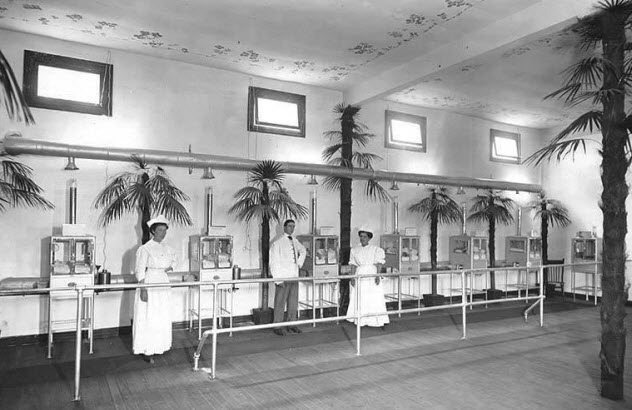
World’s fairs helped to popularize one of the most important tools of neonatal care—the incubator—primarily thanks to one man named Martin Couney.
The baby incubator was invented toward the end of the 19th century, but its usefulness was not accepted by the medical community. In fact, for the first 50 years of its existence, it functioned mostly as a novelty item.
Martin Couney, a German who may have studied medicine under obstetrician Pierre-Constant Budin, began using incubators for sideshow exhibits. In 1896, he brought them to his first world’s fair at the Great Industrial Exposition of Berlin. They proved popular enough that Couney continued to display them at other fairs in Europe and America.
It was at the Pan-American Expo in Buffalo, New York, in 1901 that Couney decided to go all out. He built a large building especially for his baby incubator exhibit. Not only did he draw a large crowd, but he also garnered plenty of media attention.[5]
Couney was so successful that he moved to New York in 1904 and opened a permanent exhibit at Coney Island’s Luna Park. He employed a team of nurses and physicians who cared for the premature babies 24/7.
Couney’s exhibit lasted until 1943, during which time he not only saved thousands of lives but also convinced the medical world of the benefits of the incubator.
5 The Minstrel Show Supported By The NAACP

The minstrel show was an American spectacle comprised of variety acts, musical performances, and comedy skits with heavy racist connotations. They frequently mocked black culture and relied on stereotypes of the era. Although black people sometimes took part in these shows, most performers were white people wearing blackface.
Minstrel shows appeared during the 1830s and remained common throughout the century. Their popularity started to fade at the beginning of the 20th century due to the rise of vaudeville. By the time of the civil rights movement, they were almost extinct. So it was a curious decision to stage a minstrel show at the 1964 New York World’s Fair.
It was called America, Be Seated! and was the brainchild of Michael Todd Jr., son of movie producer and Liz Taylor husband No. 3, Mike Todd. However, the performance was more of a satire on the old minstrel shows without the blackface and stereotypes. It featured an integrated cast of white and black performers, including singer Lola Falana and actor Louis Gossett Jr.
At first, civil rights protesters were critical of the project, but they changed their opinion once they saw previews. One NAACP chapter president said there was “nothing in this show detrimental to or ridiculing Negroes,” and another called it an “asset for integration.”[6]
Todd believed that America, Be Seated! would be so successful at the world’s fair that it would go into production across the country. In reality, the show closed after two performances, taking in only $300. Variety deemed the “minstrel” branding to be the “box office poison” that doomed the show. This was particularly unfortunate because critics compared it more to a vaudeville show.
4 The Hatred For The Eiffel Tower

Even though it became one of the most recognizable landmarks in history, the people of Paris were not thrilled with the Eiffel Tower at first. This was mostly evident among the city’s intelligentsia who argued that the iron monument would tower over Paris’ beloved historical structures and ruin the city’s beautiful skyline.
Besides aesthetic considerations, there were other reasons why people didn’t want the tower to be built. At a height of 324 meters (1,063 ft) at the tip, the Eiffel Tower became the tallest man-made structure in the world. It was almost twice as tall as the previous record-holder, the Washington Monument, which was 169 meters (555 feet).
Some critics decried it as simply a vanity project for Gustave Eiffel, who believed his tower would become as grandiose as the Egyptian pyramids. Others were more practical and simply saw it as a massively useless expense because it was merely intended to function as an archway entrance to the world’s fair.
The Eiffel Tower was built in time for the Exposition Universelle of 1889 which celebrated the French Revolution. By this point, some critics began to change their opinions, especially after the structure was lauded by international visitors such as Thomas Edison and future King Edward VII.
Others remained steadfast in their disdain for Eiffel’s “monstrosity.” Writer Guy de Maupassant, one of its most ardent detractors, allegedly had lunch every day in the Eiffel Tower restaurant because it was the only place in Paris where he could sit, enjoy the view, and not see the tower.[7]
3 The Assassination Of A President
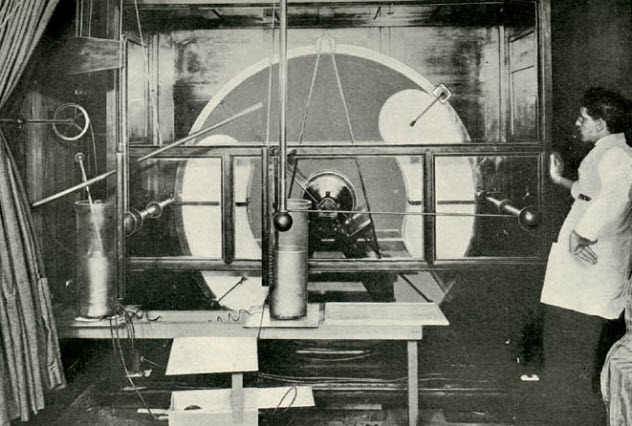
World’s fairs have seen their share of violence. The most notable example was the assassination of US President William McKinley at the 1901 Pan-American Expo in Buffalo, New York. On September 6, there was a reception at the Temple of Music auditorium where the president greeted well-wishers as they walked in. Anarchist Leon Czolgosz walked up to McKinley and shot him twice in the stomach.
One of the bullets only caused a grazing wound, but the other one went into the president’s abdomen. McKinley died eight days later of gangrene. He was operated on by an impromptu team at the expo’s small medical facility, which lacked several tools necessary for such procedures. In the end, the doctors could not locate the second bullet and had to leave it in.
After McKinley’s death, people pointed out that his life might have been saved if doctors had used a new invention featured at the same fair where he was shot—the X-ray machine. There are conflicting stories about how it went down, but according to one account, nobody thought to use the device on display at the expo.[8]
A few days later, McKinley’s medical staff requested an X-ray machine from Thomas Edison. However, they decided against using it, feeling that the president was on the mend and the risks involved in moving him to use the machine outweighed the benefits.
McKinley wasn’t the only notable politician assassinated during a universal expo. During the Chicago World’s Fair, Mayor Carter Harrison Sr. was murdered in his home by Patrick Eugene Prendergast. The celebration at the end of the expo was turned into a memorial service.
2 The People Exhibited In Human Zoos
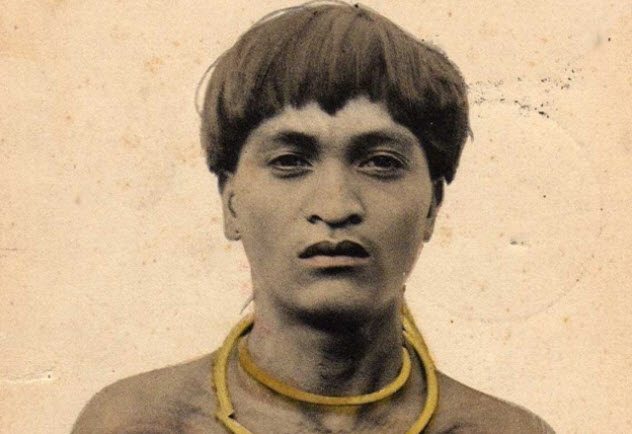
Even though world’s fairs are meant to highlight great achievements, they have also illustrated some of the most shameful aspects of humanity. This is best evidenced by human zoos.
During the second half of the 19th century, these exhibitions of people from exotic countries became quite popular in Europe. Although they were featured at the 1878 and 1889 world’s fairs in Paris, they were a particularly big hit at the 1931 Paris Colonial Exhibition, which fully boasted and celebrated France’s colonial conquests.
The French Communist Party organized a counter-exhibition called The Truth on the Colonies to expose the various abuses involved in the country’s colonialism. However, it only attracted a few thousand people as opposed to the millions who attended the fair. The last instance of a human zoo at a universal expo was the Brussels World’s Fair in 1958.[9]
In America, human zoos were prominently featured at the 1904 Louisiana Purchase Expo in St. Louis. This was after the Philippine-American War, and over 1,000 Filipinos, representing dozens of tribes, were brought over.
Their exhibits stretched over a 47-acre area and recreated their villages back home. The most popular “living exhibit” was the Igorot tribe due to their penchant for eating dog. Although in real life this was a rare practice used for special ceremonies, the city of St. Louis provided them with dogs daily for the spectacle.
1 The Baby Given Away As A Raffle Prize
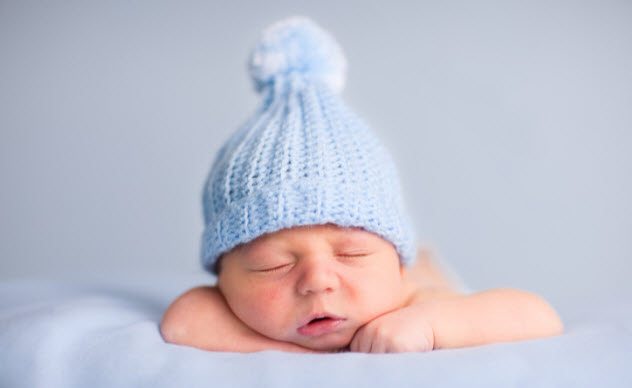
The 1909 Alaska-Yukon-Pacific Exposition in Seattle featured several of the previous entries on this list that garnered controversy. The Igorot people made their return in a human exhibit. They were accompanied by Eskimos and a Chinese village complete with opium dens. Premature babies again wowed audiences while sitting in their incubators. However, it was one particular baby who garnered the most interest.
One-month-old Ernest was an orphan described as “the property of the Washington Children’s Home Society.” Last but not least, he was given away as a raffle prize at the fair.[10]
At least, that was the intention of the expo’s organizers. A documentary from 2009 about the fair revealed that the winner never came forward to collect his “prize.” The filmmakers were unable to determine the ultimate fate of Ernest.
Read more stories involving the world’s fairs on Top 10 Incredible Time Capsules and 10 Massive Things We Built And Then Destroyed.
